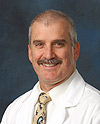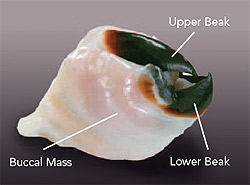Clay Kelly, MD
 Dr. Clay M. Kelly serves as the Medical Director of the APT Center. Dr. Kelly received his MD from Creighton School of Medicine in 1987. From 1987 to 1990, he was an intern and resident at MetroHealth Medical Center in the Department of Physical Medicine and Rehabilitation in Cleveland, Ohio, moving up to chief resident in 1990-1991. He joined the Department of Physical Medicine and Rehabilitation at MetroHealth Medical Center as a Staff Physiatrist in 1991, simultaneously joining the faculty of Case Western Reserve University as Senior Instructor. He was promoted to Medical Director for Outpatient Rehabilitation at MetroHealth in 1997 and promoted to Assistant Professor at CWRU in 1999. Subsequently, in 2007, Dr. Kelly was appointed Chief of Service at Louis Stokes Cleveland VA Medical Center for the Physical Medicine and Rehabilitation Service.
Dr. Clay M. Kelly serves as the Medical Director of the APT Center. Dr. Kelly received his MD from Creighton School of Medicine in 1987. From 1987 to 1990, he was an intern and resident at MetroHealth Medical Center in the Department of Physical Medicine and Rehabilitation in Cleveland, Ohio, moving up to chief resident in 1990-1991. He joined the Department of Physical Medicine and Rehabilitation at MetroHealth Medical Center as a Staff Physiatrist in 1991, simultaneously joining the faculty of Case Western Reserve University as Senior Instructor. He was promoted to Medical Director for Outpatient Rehabilitation at MetroHealth in 1997 and promoted to Assistant Professor at CWRU in 1999. Subsequently, in 2007, Dr. Kelly was appointed Chief of Service at Louis Stokes Cleveland VA Medical Center for the Physical Medicine and Rehabilitation Service.
 Dr. Kelly is known for his clinical dedication to the rehabilitative care of the amputee and the management of post-amputation pain syndrome and is recognized as an invaluable asset to the APT Center in these areas since his 2010 appointment. He has been nominated for and won multiple awards for excellence in clinical practices, the most recent being named among the top 5% of U.S. physicians.
Dr. Kelly is known for his clinical dedication to the rehabilitative care of the amputee and the management of post-amputation pain syndrome and is recognized as an invaluable asset to the APT Center in these areas since his 2010 appointment. He has been nominated for and won multiple awards for excellence in clinical practices, the most recent being named among the top 5% of U.S. physicians.
Photo: Squid beak from project, "Bio-inspired Materials for New Prosthetic Liners." Attaching hard metal or plastic prosthetic components to the soft, vulnerable skin and muscle of the residual arm or leg is a recipe for discomfort, or worse, further injury and tissue damage. Our goal is to improve the interface between a veteran amputee and their prosthetic limb by developing a new material for prosthetic liners inspired by the ‘shock absorber’ function of a squid beak. Dr. Kelly works on this project.




















